« GT Formation : Matrice des compétences métiers connexes/en » : différence entre les versions
Page créée avec « Following this first publication, the working group, comprising some twenty experts in training and cybersecurity and supported by ANSSI, decided to continue the work by creating a second, complementary matrix, this time focusing on related cybersecurity professions and associated skills. » |
Page créée avec « By approaching professions through skills, the Référentiel des compétences connexes highlights the diversity of profiles required by the cybersecurity sector. The profiles presented here, just as essential to the industry as the more technical professions, adapt their core skills to the specificities of the cyber field (cyber lawyer, risk manager, cybersecurity communications officer...). » |
||
| Ligne 12 : | Ligne 12 : | ||
Following this first publication, the working group, comprising some twenty experts in training and cybersecurity and supported by ANSSI, decided to continue the work by creating a second, complementary matrix, this time focusing on related cybersecurity professions and associated skills. | Following this first publication, the working group, comprising some twenty experts in training and cybersecurity and supported by ANSSI, decided to continue the work by creating a second, complementary matrix, this time focusing on related cybersecurity professions and associated skills. | ||
By approaching professions through skills, the Référentiel des compétences connexes highlights the diversity of profiles required by the cybersecurity sector. The profiles presented here, just as essential to the industry as the more technical professions, adapt their core skills to the specificities of the cyber field (cyber lawyer, risk manager, cybersecurity communications officer...). | |||
<div lang="fr" dir="ltr" class="mw-content-ltr"> | <div lang="fr" dir="ltr" class="mw-content-ltr"> | ||
Version du 5 décembre 2023 à 15:55

La matrice est un référentiel synthétique qui permet d'identifier les compétences et leur niveau pour l'accès à un métier
Catégorie : Groupe de travail
Statut : Terminé
According to ANSSI studies, there is a real shortage of cybersecurity skills and resources, for both suppliers and users. As of 2019, there will be over 15,000 vacancies in France. The industry anticipates the creation of 35,000 positions by 2030.
Despite the boom in this field and the career opportunities on offer, we have to admit that it is not attracting the resources we're looking for: training courses are struggling to recruit talent. This lack of attractiveness is partly due to the stereotypes associated with cybersecurity professions: demanding jobs, specialized IT skills, etc.
On the strength of these reflections, the Cyber Campus "Training" working group, co-led by Clusif and Cap Gemini, published the Référentiel des Compétences des métiers techniques de la Cybersécurité in early 2023, based in particular on the ANSSI's Panorama des métiers de la cybersécurité (link to the matrix available on the Studio des Communs wiki).
Following this first publication, the working group, comprising some twenty experts in training and cybersecurity and supported by ANSSI, decided to continue the work by creating a second, complementary matrix, this time focusing on related cybersecurity professions and associated skills.
By approaching professions through skills, the Référentiel des compétences connexes highlights the diversity of profiles required by the cybersecurity sector. The profiles presented here, just as essential to the industry as the more technical professions, adapt their core skills to the specificities of the cyber field (cyber lawyer, risk manager, cybersecurity communications officer...).
Comme pour la matrice des compétences des métiers techniques, ce référentiel s’adresse à un public large, en tant qu’outil d’aide à l’orientation, à l’insertion des jeunes diplômés et à la reconversion, mais peut également être utile aux ressources humaines, entreprises, organismes de formation ou particuliers.
Si vous souhaitez obtenir des informations supplémentaires n’hésitez pas à contacter le Studio des Communs du Campus Cyber.
Le Groupe de Travail Formation du Studio des Communs du Campus Cyber
Site Web : Campus Cyber – Construisons ensemble une société numérique de confiance
Contact : communautes@campuscyber.fr
Téléchargez également la matrice des compétences des métiers connexes de la cyber au format excel ici : https://campuscyber.fr/resources/referentiel-des-competences-des-metiers-connexes-de-la-cyber/
Porté par la communauté
CI Formation (Proposer des actions pour rendre visibles les offres de formation et alimenter la filière en nouvelles recrues au bon niveau de compétence)
Communs
| Matrice des compétences - métiers connexes | La matrice est un référentiel synthétique qui permet d'identifier les compétences et leur niveau pour l'accès à un métier |
